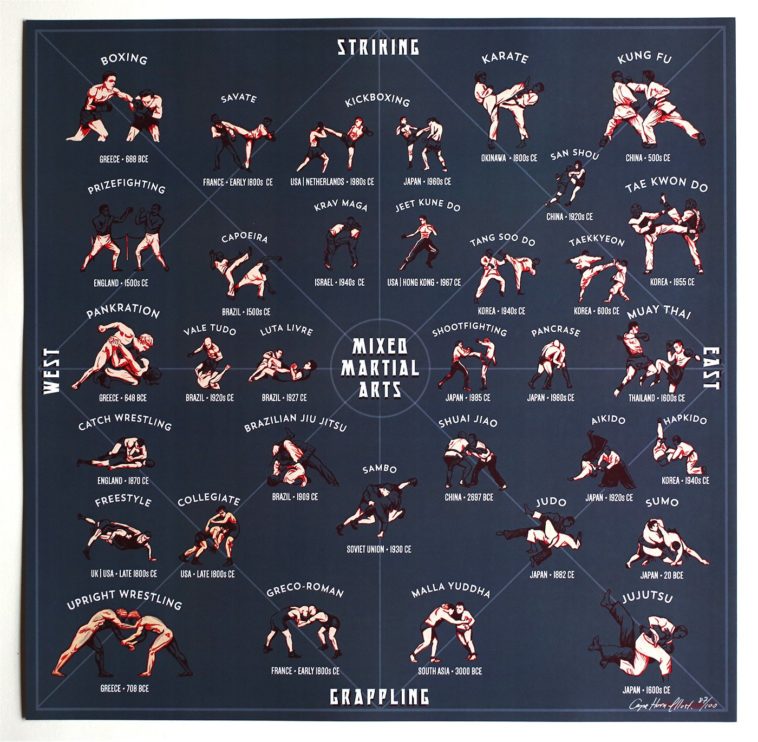Exploring The Rich Heritage And Spiritual Dimensions Of Martial Arts: An Extensive Examination
Exploring The Rich Heritage And Spiritual Dimensions Of Martial Arts: An Extensive Examination
Blog Article
Article Created By-Lauridsen Patterson
Enter the old globe where martial arts were born out of necessity in diverse regions. Cultures crafted unique fighting styles linked with historical contexts. Strategies progressed over centuries through committed method and social exchanges. Today, modern-day martial arts blend traditional elements for optimal effectiveness. Philosophically, martial arts emphasize technique, self-improvement, and consistency. Respect, humility, and balance are fundamental principles assisting professionals towards development and resilience. Discover the midsts of this rich history and approach to discover the profound influences shaping this long-lasting technique.
Beginnings of Martial Arts
Martial arts came from various regions worldwide, progressing as sensible fight systems to prevent threats. These ancient battling styles were created out of necessity, with each culture crafting methods matched to their unique atmospheres and challenges. From the grappling arts of Jujutsu in Japan to the striking strategies of Martial art in China, martial arts were deeply linked with the historical, social, and social material of their particular societies.
In Japan, the samurai class polished martial arts like Kenjutsu, the art of the sword, which later developed into the more popularized type of Kendo. Meanwhile, in Brazil, Capoeira became a blend of dance and battle, developed by enslaved Africans as a means to stand up to oppression. Each martial art brings with it a rich background and ideology, mirroring the values and beliefs of individuals who exercised them.
As you explore the beginnings of martial arts, you uncover a tapestry of human resourcefulness, strength, and the unrelenting spirit of warriors throughout time.
Development of Techniques
Through centuries of method and improvement, combat strategies within numerous martial arts have undergone an extensive evolution. From old styles like Martial art and Martial arts to extra modern self-controls such as Brazilian Jiu-Jitsu and Krav Maga, the advancement of strategies has actually been driven by a mix of cultural influences, practical applications, and technological improvements.
One significant aspect of this evolution is the cross-pollination of techniques between various martial arts. For https://conandaily.com/2019/10/10/andy-hata-one-century-%E4%B8%96%E7%B4%80-will-showcase-japans-rich-martial-arts-history-tradition/ , strategies from conventional Japanese Jiu-Jitsu were integrated into the creation of Judo by Jigoro Kano in the late 19th century. https://jaspertdltd.like-blogs.com/26381781/finding-balance-the-ways-in-which-signing-up-with-a-martial-arts-institution-can-enhance-your-life blending of designs has actually resulted in the development of crossbreed martial arts like Mixed Martial Arts (MMA), which incorporate components of striking, grappling, and entry techniques.
In addition, the development of techniques has actually been shaped by the enhancing emphasis on efficiency and effectiveness in battle. Professionals have continuously sought to improve their techniques with extensive training, experimentation, and competitors, bring about the development of extremely specialized and effective combating designs. Generally, the evolution of methods in martial arts mirrors the dynamic nature of battle and the continuous mission for improvement and technology.
Thoughtful Structures
Checking out the underlying thoughtful principles of martial arts provides understanding into their core worths and assisting ideas. At the heart of several martial arts self-controls is the principle of discipline itself. By training your body and mind to serve as one natural device, you cultivate technique that prolongs beyond the dojo or gym right into daily life. This technique incorporates respect, humbleness, and self-discipline, shaping not simply your physical abilities yet additionally your personality.
One more essential philosophical foundation in martial arts is the idea of continual self-improvement. The trip of grasping a martial art is relentless, with practitioners frequently striving to far better themselves, both physically and psychologically. This focus on growth promotes strength, perseverance, and a development mindset that can be put on all elements of life.
In addition, martial arts stress the relevance of harmony and balance. Methods are designed to use an opponent's energy versus them, highlighting the principle of generating and redirecting force as opposed to meeting it head-on. This viewpoint encompasses interpersonal relationships, advertising relaxed resolutions and mutual understanding. By welcoming these philosophical structures, martial artists not only enhance their combat abilities but additionally cultivate a way of life centered on individual growth, regard, and harmony.
Verdict
To conclude, the background and viewpoint of martial arts offer a rich tapestry of tradition, technique, and self-improvement.
Consider instance the tale of Bruce Lee, who transformed martial arts by blending different designs and ideologies to create his own unique type of Jeet Kune Do.
With dedication and advancement, martial artists continue to press boundaries and inspire others to reach their complete potential both in battle and in life.
